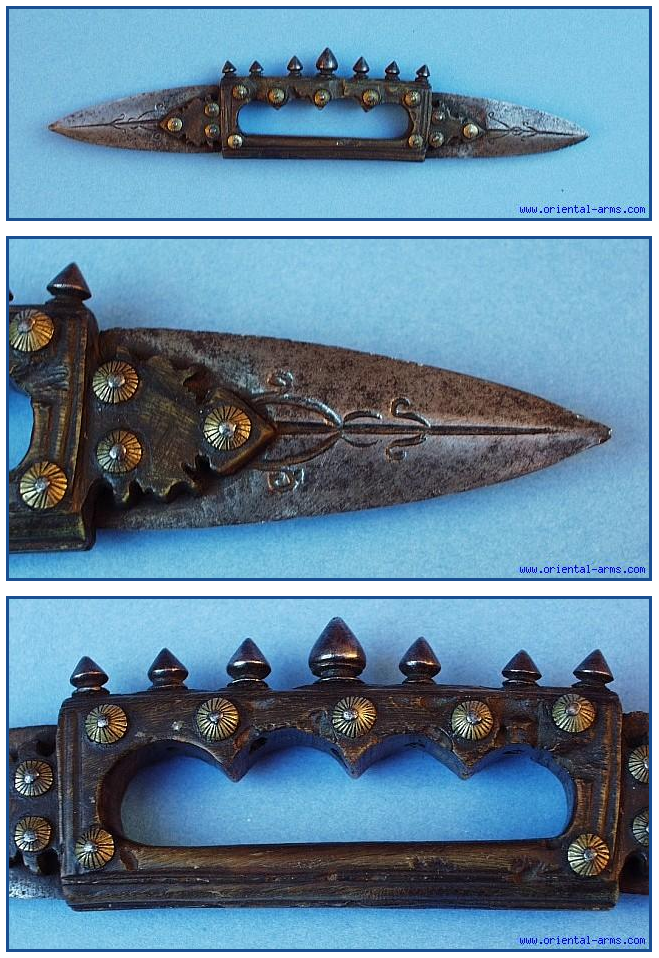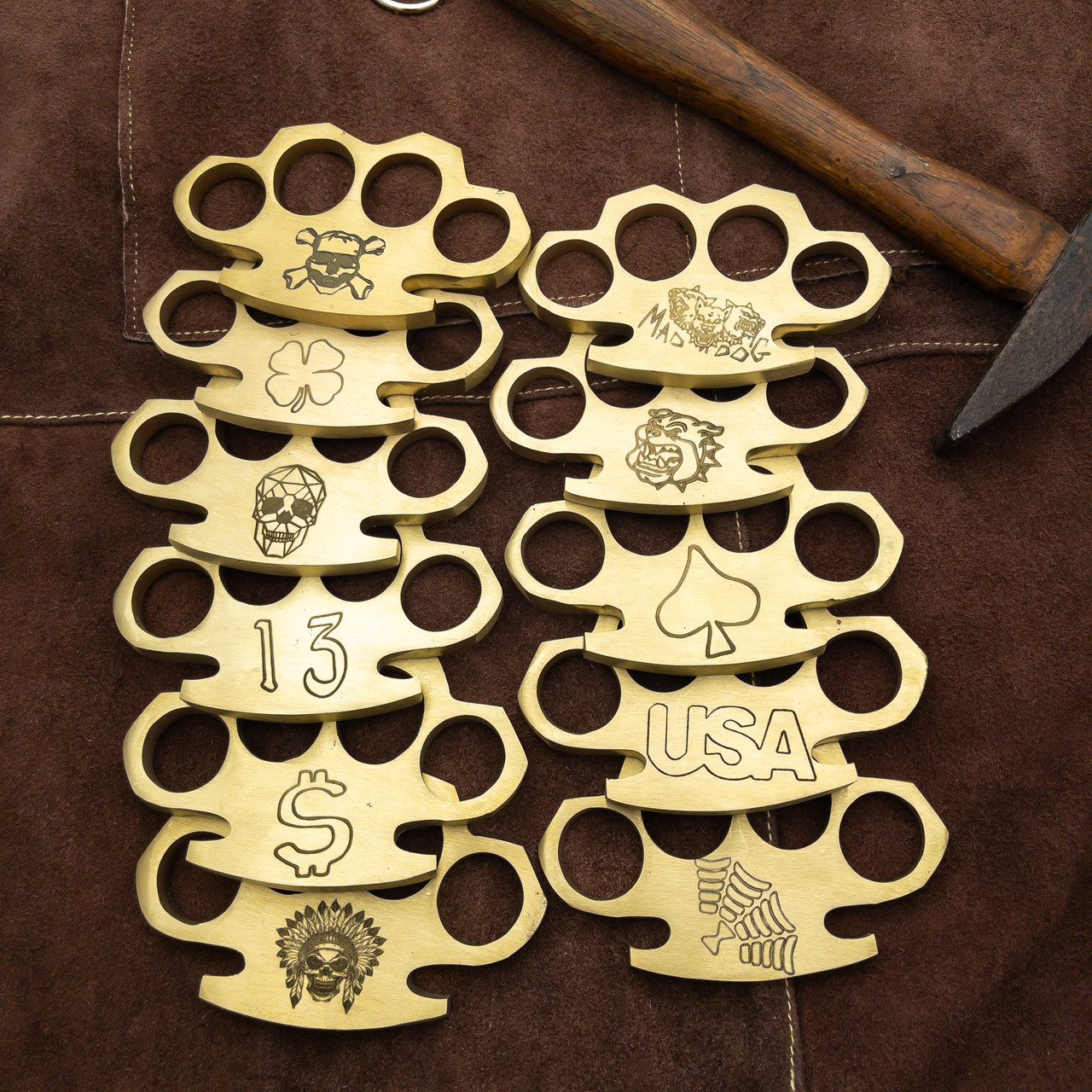Collecting Brass Knuckles: A Guide for History Buffs
Posted by Swordsswords on Jan 25th 2024
In the late 19th century, brass knuckles were commonly carried by toughs and gang members as a means of self defense or to gain an advantage in barroom brawls. Made of cast brass and designed to fit over the fingers, these spiked metal weapons could deliver a powerful and potentially lethal punch. While their violent origins may attract collectors with a fascination for antiquated self defense tools, this blog post aims to provide a responsible guide for history buffs interested in brass knuckles
We'll explore the evolution of brass knuckles' design over the decades and how their form followed the function of street fighting styles. You'll learn how to identify authentic antique brass knuckles and avoid reproductions, as well as tips for building a small but meaningful collection. Most importantly, we'll discuss proper and legal display of these items purely for their historical significance rather than any violent purpose.

Tracing the Origins of Knuckle Duster Through the Ages
The origins of knuckledusters can be traced back to the ancient Greeks, who fashioned metal knuckle for soldiers and gladiators. However, it was not until the American frontier era that knuckledusters took their iconic brass form. Pioneers and cowboys of the Wild West outfitted their metal knuckle with brass to add punching power in saloon brawls.
Over time, brass knuckles became a signature weapons for gangsters during Prohibition. Figures like Al Capone demonstrated how brass knuckles could inflict damage while avoiding long-term injury. Once associated mainly with organized crime, most states and countries went on to ban private ownership of brass knuckles in the 20th century. Still, their place in history as an iconic symbol of toughness remains, having been wielded by real-life tough guys and depicted in films like The Untouchables.
Identifying and Dating Brass Knuckles:
There are several varieties of knuckle duster to be aware of when starting a collection. Basic brass knuckles fit over individual fingers, while trench knives integrate a blade. More ornate styles feature engravings or decorative inlays. Close examination of materials can also offer clues: while brass was most common, other metals like steel were sometimes used. Maker's marks, if present, provide valuable authentication. Stylistic elements like scalloped edges or extended crossguards point to approximate eras. For example, World War I-era trench knives have a distinct silhouette. Proper dating also requires contextual knowledge. Knuckle with minimalist designs likely predate more intricate Art Deco or gangster-themed pieces. With a discerning eye and grasp of historical trends, enthusiasts can assess period details to distinguish genuine antique knuckledusters from reproductions.
Tips for Sourcing Authentic Antique Knuckle Duster
There are several varieties of brass knuckle to be aware of when starting a collection. Basic brass knuckles fit over individual fingers, while trench knives integrate a blade. More ornate styles feature engravings or decorative inlays.
Close examination of materials can also offer clues: while belt buckle was most common, other metals like steel were sometimes used. Maker's marks, if present, provide valuable authentication.
Stylistic elements like scalloped edges or extended crossguards point to approximate eras. For example, World War I-era trench knives have a distinct silhouette. Proper dating also requires contextual knowledge. Concealed weapons with minimalist designs likely predate more intricate Art Deco or gangster-themed pieces. With a discerning eye and grasp of historical trends, enthusiasts can assess period details to distinguish genuine antique knuckledusters from reproductions.
Safety and Legality of Brass Knuckles:
While collecting brass knuckles as historical items is legal in some areas, ownership and carrying laws vary greatly worldwide. In the U.S., restrictions differ between states - some ban all types, while others permit antique display models.
It is imperative collectors understand regulations where they live. Even in locations where owning pure brass knuckles is allowed, responsible handling and storage is important. Display pieces should remain securely locked away from public access.
Proper safety precautions also involve inspecting items for structural integrity to avoid injury. Before pursuing this hobby, conduct thorough research on applicable local, national and international statutes. Following all relevant laws and exercising caution is not only wise, but demonstrates respect for these artifacts' controversial past uses and stigma.

A Guide to Building an Ethical Brass Knuckle Collection
When starting a real brass knuckle collection , the utmost care must be taken to source items ethically. While antique stores occasionally yield finds, a responsible collector avoids private sellers with uncertain provenance.
When browsing auctions, be wary of listings lacking documentation. Condition greatly impacts value - handle items respectfully and don't purchase if repair is needed. Given the violent stigma, focus on display pieces in mint condition rather than those bearing signs of use.
Thoroughly research international shipping and ownership laws to stay legal. Consider donating time/money to organizations educating the public on non-violence, to help reframe collecting as historical appreciation.
Conclusion
The journey of brass knuckle as historical weapons of war to self defense tools in street brawls deserves some more thorough analysis. Check out swordsswords blog titled: Knuckle Duster Explained for more detailed information.
When buying brass knuckles for sale, it is imperative collectors understand regulations where they live. Even in locations where owning brass knuckle is allowed, responsible handling and storage is important. Check the collection of swordsswords.com because they are offering affordable and high quality brass knuckles options.

